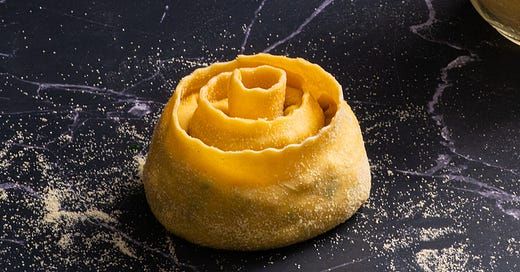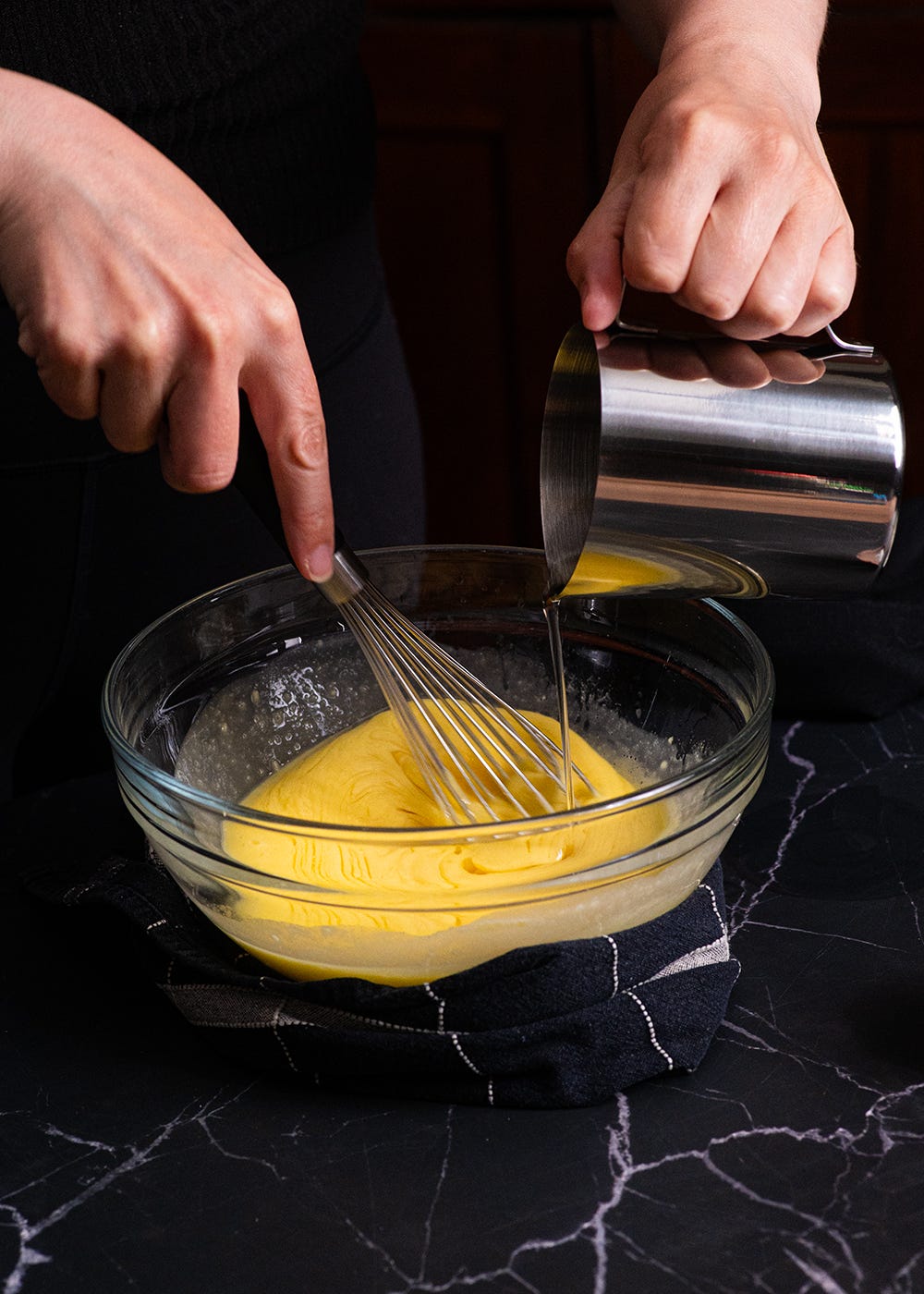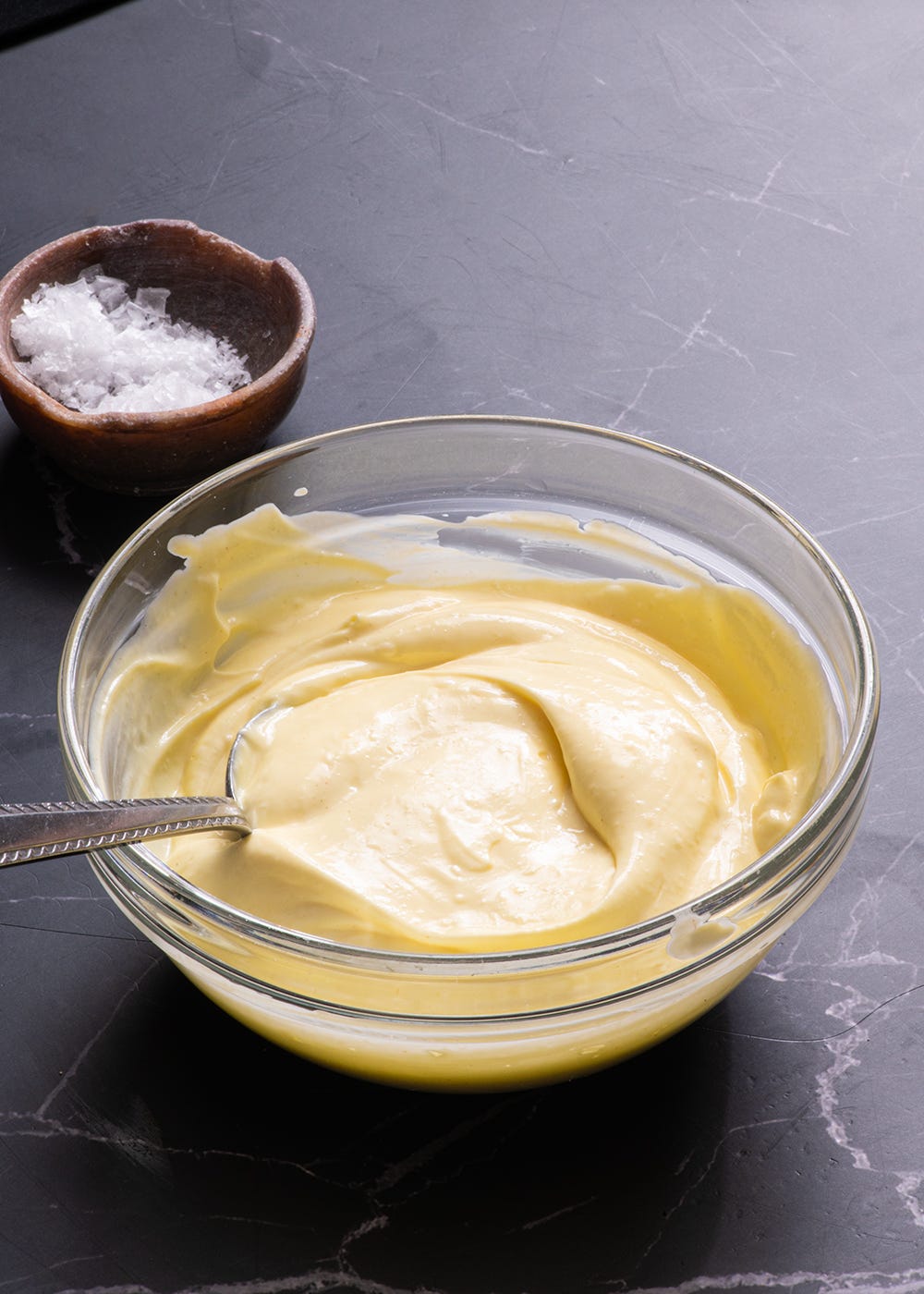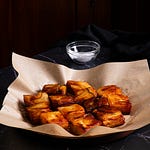This week we’re talking emulsions, condiments, and pasta. That’s right! It’s an action-packed Support Saturday. So I’m not going to bore you with introductions because the video and all the nonsense below more than has you covered. But I will mention that if you wound up here first, read my article Crab Cake Girella Pasta, grab the recipe, and meet us back here!
Making Mayonnaise
Mayonnaise is not hard to make, but it is an extra step. And store-bought mayonnaise is perfectly delicious and plentiful. But having said that, this homemade version has more of a zip, thanks to the fresh lemon juice and the minced garlic. But you do not have to make your mayo to make a gold star remoulade. If you do go the store-bought route, I would consider doctoring the mayo with some garlic and lemon juice before proceeding with the remoulade recipe as written. But it’s kind of fun to make your own mayo (provided you have a blender), and people are always impressed by this level of commitment.
In the tutorial video, I will walk you through how to make mayo by hand because I don’t know your story. Maybe you don’t have a blender but are still hell bent on gourmet mayonnaise. I sort of hope that’s the case, I like the energy. But I would caution you if you do decide to go the elbow-grease route - it is a lot of whisking. Like arm-fall-off-level of whisking. Even I got my mayo halfway there and broke down and used my blender.
The blender is far more efficient at creating emulsions because it can whisk faster than you ever can. And that super fast whisking creates a vortex in the center that sucks the oil down into the water-heavy ingredients, forcing it to emulsify instead of separating and rising to the surface like it really wants to. So if you have a blender handy, dig it out. And if you don’t, invite some friends over for a whisking party. I know that’s not a thing, but maybe it could be?
What is Remoulade?
Remoulade originated in Picardy, a region in Northern France. The sauce derives its name from the local term for horseradish, which suggests that the ingredient was once a prominent component of the sauce. Somewhere along the way, the horseradish got largely dropped by the French. But the ingredient found a home in the Creole version of remoulade, but I’m getting ahead of myself.
When remoulade made its first known appearance in print in the 1600s, it was described as a “broth flavoured with chopped anchovies, capers, parsley, spring onions, garlic, and a little oil” Over the centuries, French remoulade evolved into a mayo-based sauce, similar to tartar sauce but far more herb-forward. Most recipes make liberal use of tarragon, chervil, and parsley. It also favours brinier, umami-laden characters like cornichons, capers, and anchovies for a more savoury, less sweet flavor than the gherkin-heavy tartar sauce.
Listen to this episode with a 7-day free trial
Subscribe to Rhubarb and Cod to listen to this post and get 7 days of free access to the full post archives.













